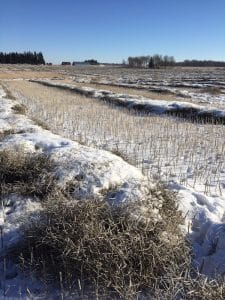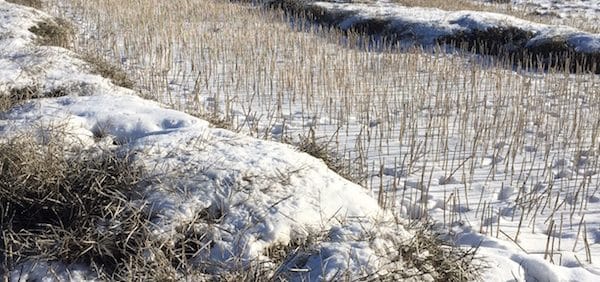Some very late canola crops are still laying in swaths. Previous experience suggests two tips:
Quality continues to drop over time. It may be better to attempt to combine this canola in the winter rather than waiting until spring as quality will continue to degrade. In addition, the longer canola sits, the more that will shell out or be lost to wildlife feeding. In 2010, Canola Watch reported on spring combining results from canola that overwintered in the Peace region. We wrote: “As expected, most is grading No.2 or No.3 with some down at sample. In general, spring-combined canola has high free-fatty acids, which degrade the oil, and has wildlife residue that customers don’t want.”
Colder is better for winter combining. Colder than -15°C is ideal in this situation if any snow is being picked up in the swath. With snow going through the combine, warmer temperatures will cause sieves to ice up.


